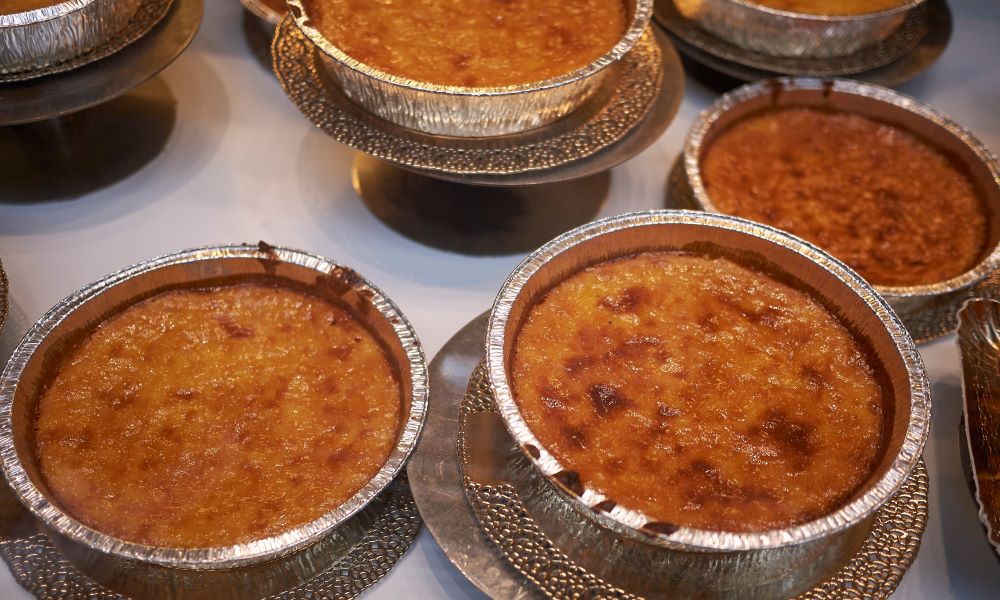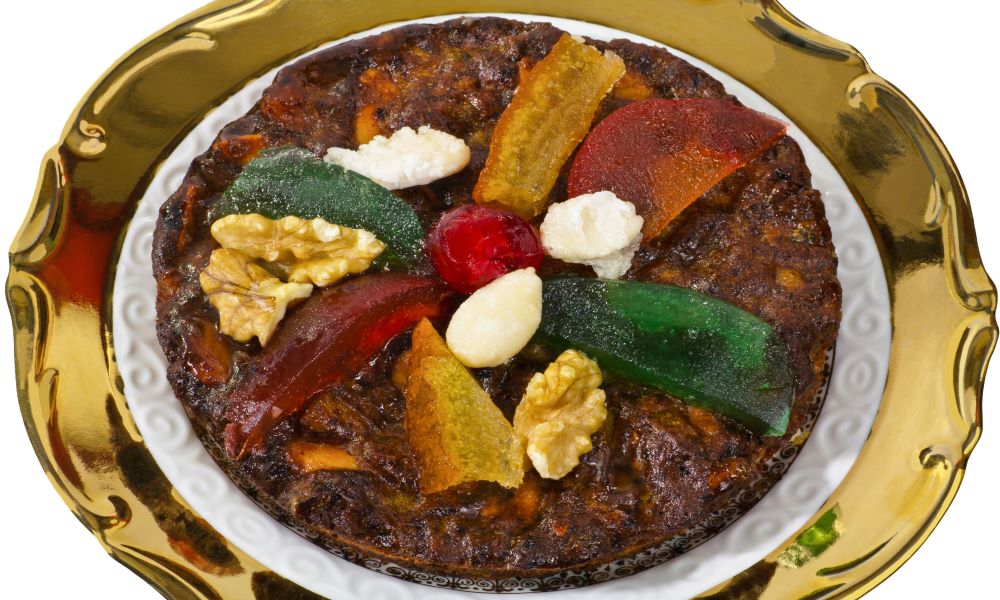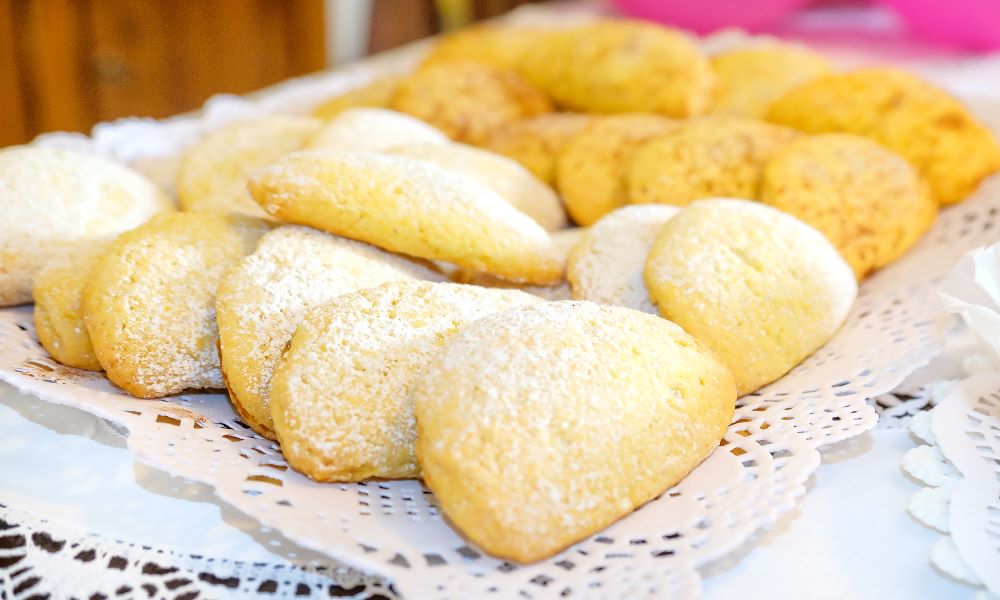Bologna is certainly known for its cuisine, and so far so good. But if we think of the city of the Two Towers, perhaps desserts are not the first thing that comes to mind. Tortellini, tortelloni, lasagne and balanzoni are the cornerstones of Bolognese gastronomy, but they are not the only specialities you can sample during a trip to the city.
There are many typical Bolognese desserts, and it is worth trying them all! You might have heard about one, the zuppa inglese, a dessert that is also served in other parts of Emilia-Romagna, but which in Bologna is really delicious. It is also very pretty to look at with its alternating layers of sponge cake soaked in alchermes, custard and chocolate cream.
So let us discover four other traditional Bolognese desserts, perhaps less well known but just as good. Four desserts with a special taste and texture that the foodies will look forward to tasting!
The rice cake is therefore a soft and firm cake at the same time because of the rice grains that are its main ingredient. Each bite will be like an explosion of flavours in your mouth, and you will be eager to eat another piece right away!
What is the origin of this cake? To find out, we have to go back to the end of the 17th century when Bologna celebrated the so-called Festa degli Addobbi, a religious tradition that fell in June during which rice cake was prepared.
But this typical cake has another peculiarity. If you have already ordered it in a restaurant, you will immediately notice the shape of the cake, which is traditionally cut into diamond-shaped pieces (never squares!).

If you are a lover of cakes, then pinza is for you. Originally prepared only for Christmas, today you can find it all year round in bakeries in Bologna and even in some pastry shops.
It looks like a small loaf of flattened bread, covered with caster sugar. Very simple then, and yet there’s a surprise in the inside: a soft heart of mostarda bolognese, a dark-coloured jam made from quince apples and pears, and oranges.
To prepare it, all you have to do is roll out the dough - made of flour, sugar, butter and eggs - and cover it with a generous layer of mostarda, then wrap it around itself. It is precisely from this operation that the name pinza seems to derive, because by closing it, the dough seals the filling like tweezers.
The pinza Bolognese is not only eaten at the end of a meal accompanied by a small glass of bitter, but also as a snack over a good cup of tea or coffee.
Like the pinza, the certosino is a typical Christmas dessert. We are talking about the king of Bolognese desserts, famous for its strong, very particular and spicy flavour.
Also called panspeziale, certosino is made from a combination of almonds, pine nuts, candied fruit, flour, honey, dark chocolate, cocoa, mostarda, and other ingredients. A very rich dessert, perfect for cold winter days.
But where does the name certosino come from? As the name itself suggests, the recipe is linked to the order of Carthusian monks, who invented it in the Middle Ages and were the only ones to make it in the past.

Finally, let’s talk about raviole. Among the typical Bolognese sweets, raviole are the closest to biscuits. Their shape is that of a half-moon, which contains a filling of mostarda Bolognese inside.
The dough is very similar to that of pinza (and shortcrust pastry): it is made with flour, sugar, butter and eggs, with a spoonful of mostarda on top. Once cooked, the raviole are often brushed with alchermes and covered with caster sugar.
Their origin is peasant, and their history is particular. Raviole were prepared on the feast day of St Joseph, 19 March, and hung from hedges to celebrate the start of spring and the resumption of work in the fields.

There are many typical Bolognese desserts, and it is worth trying them all! You might have heard about one, the zuppa inglese, a dessert that is also served in other parts of Emilia-Romagna, but which in Bologna is really delicious. It is also very pretty to look at with its alternating layers of sponge cake soaked in alchermes, custard and chocolate cream.
So let us discover four other traditional Bolognese desserts, perhaps less well known but just as good. Four desserts with a special taste and texture that the foodies will look forward to tasting!
1. The rice cake
Let's start with Grandma's classic dessert. The rice cake is a dessert made with milk and rice, prepared with peeled and chopped almonds, candied citron and bitter almond liqueur, all ingredients that give it a truly unmistakable aroma and flavour.The rice cake is therefore a soft and firm cake at the same time because of the rice grains that are its main ingredient. Each bite will be like an explosion of flavours in your mouth, and you will be eager to eat another piece right away!
What is the origin of this cake? To find out, we have to go back to the end of the 17th century when Bologna celebrated the so-called Festa degli Addobbi, a religious tradition that fell in June during which rice cake was prepared.
But this typical cake has another peculiarity. If you have already ordered it in a restaurant, you will immediately notice the shape of the cake, which is traditionally cut into diamond-shaped pieces (never squares!).

2. The Bolognese pinza
If you are a lover of cakes, then pinza is for you. Originally prepared only for Christmas, today you can find it all year round in bakeries in Bologna and even in some pastry shops.It looks like a small loaf of flattened bread, covered with caster sugar. Very simple then, and yet there’s a surprise in the inside: a soft heart of mostarda bolognese, a dark-coloured jam made from quince apples and pears, and oranges.
To prepare it, all you have to do is roll out the dough - made of flour, sugar, butter and eggs - and cover it with a generous layer of mostarda, then wrap it around itself. It is precisely from this operation that the name pinza seems to derive, because by closing it, the dough seals the filling like tweezers.
The pinza Bolognese is not only eaten at the end of a meal accompanied by a small glass of bitter, but also as a snack over a good cup of tea or coffee.
3. The certosino
Like the pinza, the certosino is a typical Christmas dessert. We are talking about the king of Bolognese desserts, famous for its strong, very particular and spicy flavour.Also called panspeziale, certosino is made from a combination of almonds, pine nuts, candied fruit, flour, honey, dark chocolate, cocoa, mostarda, and other ingredients. A very rich dessert, perfect for cold winter days.
But where does the name certosino come from? As the name itself suggests, the recipe is linked to the order of Carthusian monks, who invented it in the Middle Ages and were the only ones to make it in the past.

4. Raviole with mustard
Finally, let’s talk about raviole. Among the typical Bolognese sweets, raviole are the closest to biscuits. Their shape is that of a half-moon, which contains a filling of mostarda Bolognese inside.The dough is very similar to that of pinza (and shortcrust pastry): it is made with flour, sugar, butter and eggs, with a spoonful of mostarda on top. Once cooked, the raviole are often brushed with alchermes and covered with caster sugar.
Their origin is peasant, and their history is particular. Raviole were prepared on the feast day of St Joseph, 19 March, and hung from hedges to celebrate the start of spring and the resumption of work in the fields.


